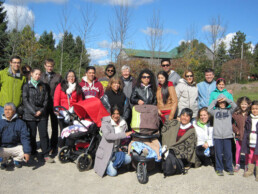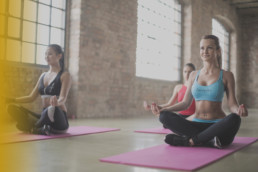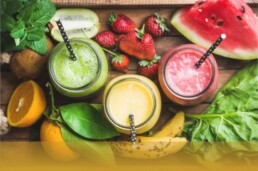The Sky´s the Limit
towards a boundless self.
Dr. Wayne Dyer, discussed the humanist approach to psychology, where our potential for self realization can actualize when we are able to more past our own barriers and limitations.
Build bridges

Pages
“Exercise was an honour among the ancients. Yoga, and Judo, in their origins, are two complete systems, two transcendental philosophies, with their technical aspects and practical applications.”
– S.R. de la Ferriere
Based on the 84 asanas of the Yoghi tradition, the Ferriz-Ferriere Yoga Method was devised and created for the general public as an indispensable discipline with active asanas in combination with movements predominantly found in the West.

It has become one of the most basic techniques of permanently improving our physical, emotional and mental health. It is truly an unsurpassed discipline. The effects of these exercises can be felt throughout the whole body. It has been recommended by education and health institutions, humanitarians, doctors, educators and corporations because of the improvements seen in it’s practitioners’ psychosomatic functions, psychomotor reactions, balanced emotions, and energy levels.
Its benefits (physical, emotional, mental and spiritual) can be felt in very little time, leading to a harmony with our surroundings. Due to its softer nature everyone can practice these exercises.
Benefits
-
Improves memory and concentration
-
Helps to calm and relax the mind and the body, combating anxiety and providing serenity
-
Brings harmony to glandular functions
-
Vitalizes the nervous system
-
Prevents arthritis and osteoarthritis
-
Improves blood circulation
-
Effectively works against obesity and spinal ankylosis
-
Helps to improve cardiovascular health
-
Helps to overcome respiratory deficiencies
-
Improves the flexibility of muscles, ligaments and tendons
-
Corrects bad postural habits, providing a slim figure
-
Oxygenates, cleanses and increases pulmonary circulation
-
Prolongates youth by improving flexibility in the spine
-
Prevents gastrointestinal disorders by improving digestive function
Naturally, there are many elements in the Yoga system. The discipline of exercises falls under 8 basic elements. These steps are said in the Yoga tradition to be necessary in order to rise above the animal condition. Many of these steps have arisen and evolved within different societies and cultures, and Yoga specifies these 8 steps (or “angas”) as:
1. Yama – Abstinences
2. Niyama – Rules of life
3. Asanas – positions of the body
4. Pranayama – the control of one’s breathing
5. Pratyahara – the control of one’s senses (**not the suppression**)
6. Dharana – Meditation
7. Dhyana – Concentration
8. Samadhi – Identification
The Ferriz-Ferriere Yoga Method would fall under the Asanas (positions of the body) and more specifically be a form of Grathasta Yoga (physical exercises). As can be seen, the positions of one’s body receives greater benefits when accompanied by the first two steps (vegetarianism for example), and is more profoundly complimented by greater research and knowledge.
Jnana Yoga (the Path of Knowledge)
JNANA – YOGA is the path of knowledge, work and study. Since ancient times, the Upanishads proclaimed the superiority of this Way. It is concerned with a life based on rational study, on the Scriptures, on Science, etc.
It is said that it is the Way by virtue in which the avarana (veil of ignorance) is found to be far from the Yoghi and it is constituted by BHUMIS (planes):
The 7 Bhumis of Jnana Yoga are:
1. Subha-Iccha – Good Will
2. Vicharana – Reflextion
3. Tanu-Manasa – Spirit Subtlety
4. Sattwa- Apatti – The Perception of Reality
5. Asansakti – The Disappearance of Worldly Attractions
6. Padartha Abhavani – The Disappearance of Visible Forms
7. Turyaga – The Non-Manifested
The way of knowledge (Jnanakanda) asked for labours that the majority of people were incapable of fulfilling at the time and the Wisdom of the Old School was a virtue by which the layman had much difficulties in reaching. It is because of this that the majority had to solely reduce to Faith.
House of Culture

I am text block. Click edit button to change this text. Lorem ipsum dolor sit amet, consectetur adipiscing elit. Ut elit tellus, luctus nec ullamcorper mattis, pulvinar dapibus leo.
Yoga
“Exercise was an honour among the ancients. Yoga, and Judo, in their origins, are two complete systems, two transcendental philosophies, with their technical aspects and practical applications.”
– S.R. de la Ferriere
Mind-Body Yoga is based on the Ferriz-Ferriere method from the 84 asanas of the Yoghi tradition. This method was created for the general public for greater public accessibility and to more easily incorporate these exercises as part of one of many disciplines within the Yoghi tradition.
The positive effects of these exercises can be immediately felt by participants. It has been recommended by education and health institutions, humanitarians, doctors, educators and organizations because of the improvements seen in it’s practitioners’ psychosomatic functions, psychomotor reactions, balanced emotions, and energy levels.
Practicing these exercises, especially in a collective space, is meant to produce greater harmony in our physical, emotional, mental and spiritual bodies. Because the asanas are active, as oppose to static positions, there is less chances of pulling muscles and can be accommodated and accessible for all ages and ability types
Benefits
-
Improves memory and concentration
-
Helps to calm and relax the mind and the body, combating anxiety and providing serenity
-
Brings harmony to glandular functions
-
Vitalizes the nervous system
-
Prevents arthritis and osteoarthritis
-
Improves blood circulation
-
Effectively works against obesity and spinal ankylosis
-
Helps to improve cardiovascular health
-
Helps to overcome respiratory deficiencies
-
Improves the flexibility of muscles, ligaments and tendons
-
Corrects bad postural habits, providing a slim figure
-
Oxygenates, cleanses and increases pulmonary circulation
-
Prolongates youth by improving flexibility in the spine
-
Prevents gastrointestinal disorders by improving digestive function
There are many elements in the Yoga system. The discipline of exercises falls under 8 basic elements. These steps are said in the Yoga tradition to be necessary in order to rise above the animal condition The Yoga tradition outlines these steps to support us evolving beyond our primordial emotions and state of consciousness. In Sanskrit these steps are known as Angas:
1. Yama – Abstinences
2. Niyama – Rules of life
3. Asanas – positions of the body
4. Pranayama – the control of one’s breathing
5. Pratyahara – the control of one’s senses (**not the suppression**)
6. Dharana – Meditation
7. Dhyana – Concentration
8. Samadhi – Identification
The Ferriz-Ferriere Yoga Method would fall under the Asanas (positions of the body) and more specifically be a form of Grathasta Yoga (physical exercises). The positions of one’s body receives greater benefits when accompanied by the first two steps (vegetarianism for example), and is more profoundly complimented when participants are more actively engaged in expanding their knowledge on the subject and on continuing their learning journey in attempting to uncover the many truths in our societies in general.
Jnana Yoga (the Path of Knowledge)
JNANA – YOGA is the path of knowledge, work and study. Since ancient times, the Upanishads proclaimed the superiority of this Way. It is concerned with a life based on rational study, on the scriptures and sacred ancient texts, on science, the arts and philosophy. It is an approach that stems from following systematic research methods and ancient disciplines on the path to greater mental and spiritual awakening.
The avarana (veil of ignorance) is therefore very far from the Yoghi
Within this tradition, BHUMIS (planes) are states of consciousness:
The 7 Bhumis of Jnana Yoga are:
1. Subha-Iccha – Good Will
2. Vicharana – Reflextion
3. Tanu-Manasa – Spirit Subtlety
4. Sattwa- Apatti – The Perception of Reality
5. Asansakti – The Disappearance of Worldly Attractions
6. Padartha Abhavani – The Disappearance of Visible Forms
7. Turyaga – The Non-Manifested
Although the path of Faith and Hatha Yoga is one of many paths in the Yoga system, the way of knowledge (Jnanakanda) is an intellectual and comprehensive path that asks for great strength of character and is meant to integrate all Yoga paths. A practitioner or student practicing Jnana Yoga would for example also integrate Karma Yoga in their daily praxis, which is the Yoga or science of action. Ghandi is one of the most publicly known practitioners of this path, which views experiences and the actual effort in the act to positive change as the primary path to spiritual enlightenment.
Seminars
Take your time.
I’ve got a Fujifilm X100s. It runs about $1300. It’s easily the best camera I’ve ever owned. I take care of it as best as I can, but I don’t let taking care of it impact the photography. Let me elaborate on that a bit better. You’ll get better at each section of what we talked about slowly. And while you do, you’ll be amazed at how much easier it all is and how the habit forms. The best way to get better at photography is start by taking your camera everywhere. If you leave your house, your camera leaves with you. The only exception is if you’re planning for a weekend bender — then probably leave it at home. Other than that, always have it slung over your shoulder. It would probably help to get an extra battery to carry in your pocket. I’ve got three batteries. One in my camera, one in my pocket, one in the charger.
When it dies, swap them all.
For me, the most important part of improving at photography has been sharing it. Sign up for an Exposure account, or post regularly to Tumblr, or both. Tell people you’re trying to get better at photography. Talk about it. When you talk about it, other people get excited about it. They’ll come on photo walks with you. They’ll pose for portraits. They’ll buy your prints, zines, whatever.
Clouds come floating into my life, no longer to carry rain or usher storm, but to add color to my sunset sky.
— Rabindranath Tagore
Breathe the world.
I’ve got a Fujifilm X100s. It runs about $1300. It’s easily the best camera I’ve ever owned. I take care of it as best as I can, but I don’t let taking care of it impact the photography. Let me elaborate on that a bit better. You’ll get better at each section of what we talked about slowly. And while you do, you’ll be amazed at how much easier it all is and how the habit forms. The best way to get better at photography is start by taking your camera everywhere. If you leave your house, your camera leaves with you. The only exception is if you’re planning for a weekend bender — then probably leave it at home. Other than that, always have it slung over your shoulder. It would probably help to get an extra battery to carry in your pocket. I’ve got three batteries. One in my camera, one in my pocket, one in the charger. When it dies, swap them all.
For me, the most important part of improving at photography has been sharing it. Sign up for an Exposure account, or post regularly to Tumblr, or both. Tell people you’re trying to get better at photography. Talk about it. When you talk about it, other people get excited about it. They’ll come on photo walks with you. They’ll pose for portraits. They’ll buy your prints, zines, whatever.
Heavy hearts, like heavy clouds in the sky, are best relieved by the letting of a little water.
— Christopher Morley
Enjoy the morning.
The best way to get better at photography is start by taking your camera everywhere. If you leave your house, your camera leaves with you. The only exception is if you’re planning for a weekend bender — then probably leave it at home. Other than that, always have it slung over your shoulder. It would probably help to get an extra battery to carry in your pocket. I’ve got three batteries. One in my camera, one in my pocket, one in the charger. When it dies, swap them all.
For me, the most important part of improving at photography has been sharing it. Sign up for an Exposure account, or post regularly to Tumblr, or both. Tell people you’re trying to get better at photography. Talk about it. When you talk about it, other people get excited about it. They’ll come on photo walks with you. They’ll pose for portraits. They’ll buy your prints, zines, whatever. I’ve got a Fujifilm X100s. It runs about $1300.
It’s easily the best camera I’ve ever owned. I take care of it as best as I can, but I don’t let taking care of it impact the photography. Let me elaborate on that a bit better. You’ll get better at each section of what we talked about slowly. And while you do, you’ll be amazed at how much easier it all is and how the habit forms.
There are no rules of architecture for a castle in the clouds and this is real.
— Gilbert K. Chesterton
Free your mind.
The best way to get better at photography is start by taking your camera everywhere. If you leave your house, your camera leaves with you. The only exception is if you’re planning for a weekend bender — then probably leave it at home. Other than that, always have it slung over your shoulder. It would probably help to get an extra battery to carry in your pocket. I’ve got three batteries. One in my camera, one in my pocket, one in the charger. When it dies, swap them all.
I’ve got a Fujifilm X100s. It runs about $1300. It’s easily the best camera I’ve ever owned. I take care of it as best as I can, but I don’t let taking care of it impact the photography. Let me elaborate on that a bit better. You’ll get better at each section of what we talked about slowly. And while you do, you’ll be amazed at how much easier it all is and how the habit forms.
For me, the most important part of improving at photography has been sharing it. Sign up for an Exposure account, or post regularly to Tumblr, or both. Tell people you’re trying to get better at photography. Talk about it. When you talk about it, other people get excited about it. They’ll come on photo walks with you. They’ll pose for portraits. They’ll buy your prints, zines, whatever.
Photography is better shared.
Nature
Join us on our ecological adventures where we hike and explore different areas of the GTA and beyond and investigate the diverse habitats and wildlife that make up our beautiful neighborhoods, with a dose of current ecological projects that are popping up. These are all ages and family friendly events!




Children Workshop
We offer a variety of workshops, currently focused on three main concepts: the environment, food and nutrition. Through these main concepts, we develop ideas, food science experiments and creative art reflections and presentations. We use scientific research methods as means to actively build stronger relationships with our surroundings, whether is be with the people that the children engage with on a daily basis, or the situations that they face in life. Our workshops a geared towards promoting higher neuro-plasticity, finding creative ways to collectively transmit what they have learned to their community.
We also give children a short yoga session to help them relax and concentrate better. In addition we provide light snacks at the end of each workshop.Workshops are currently being held in Toronto and Oakville.


Naturlandia
“Let thy food be thy medicine”– Hippocrates
“The vegetarian diet, fermentative and non-putrefactive, has indeed been followed, disseminated and proclaimed, but the cultural realm has not been followed but from a minority” – Dr. David Juan Ferriz Olivares.
Grain Bowls and Salads
Foods of the World Grain Bowl $10
(Quinoa, baby kale, cherry tomatoes, cucumbers, pumpkin seeds, cashew cream sauce)
North to South Salad (gluten free) $10
(Avocado, Red beans, corn, cherry tomatoes, baby kale, sweet peppers, creamy lemon avocado sauce)
Sandwiches
Grilled Cheese $5
(vegan or dairy cheese option)
Pesto Grilled Cheese $6
(vegan or dairy cheese option)
Andean Sandwich $8
(Baby kale, dairy/vegan cheese, tomato, avocado, black olives, pesto)
Smoothies
Protein Tropical Thickie $9.50
(Frozen Pineapple, Dragon Fruit, Passion Fruit, Mango, Banana, Coconut/Dairy Yogurt, Vegan or Whey protein powder)
Smooth Chocosol Almond $7
(Chocosol cinnamon chocolate, Almond Butter, Soy Milk,
Cold-Pressed Juices
Sweet Beet $11
(Beet, Carrot, Apple, Ginger)
Carrot Pineapple Twist $11
(Carrot, Pineapple, Ginger)
Cool Immunity $11
(Celery, Apple, Cucumber, Lemons, ginger)
Freshly Squeezed Orange Juice
Organic $6
Regular $5
“vegetarianism […] corresponds to three planes, in which all problems should be considered: the material or physical Plane, which can be examined in light of official science; the ideal or astral Plane, which constitutes, so to say, the sentimental aspect; and then the purely spiritual or Divine nature Plane, the Superior Reasons, which at the same time represents synthesis.”

Volunteer

ivanr0405
If you’re not sure how much time you are actually spending on various tasks, use a tool like Rescue Time (their free version is excellent!) which runs in the background and tracks where your time is being spent. It can even send you weekly reports so you know exactly how much time you wasted on Facebook, or spent in your email inbox! You can assign different websites or programs/applications on a scale of very distracting to very productive, so you can see at a glance things like: which days of the week you’re most productive, which times of the day you’re most productive, and the sites on which you’re spending the most distracting time. I stumbled upon the concept of margin while reading a post by Michael Hyatt, which led me to design my ideal week.
Richard Swenson, M.D. (who wrote the book: Margin: Restoring Emotional, Physical, Financial, and Time Reserves to Overloaded Lives) describes margin like this:
Last year I wrote about why booking too far in advance can be dangerous for your business, and this concept of margin so eloquently captures what I had recognized had been my problem: I was so booked up with clients that I wasn’t leaving any margin for error, growth, planning, or reflection. I wasn’t really growing my business in a sustainable way; I was just booking one client after the next. At the time this seemed like a good thing: doesn’t growing my business mean getting more clients?
What if instead of booking up to 100% capacity (which more often than not ends up being closer to 120%), we only booked up to an 80% capacity?
What if we left more room for growth (personal or professional) and stopped being one with “busy-ness”?
I spent nearly a year turning down every new project (and even getting rid of old ones) so that I could reduce my workload, build in more margin, and create what is now Digital Strategy School. It takes time to build margin into your schedule.
What could you accomplish with 20% more time?
Write a book. Create a program. Update your contracts and proposals (which has been on your to-do list for how long..?) Spend more time with your family. Go above and beyond for a client. Learn something new. Actually follow through on the things that have been nagging at you for a long time.
When you design your ideal week, you start to see that the time you think you have is often not in alignment with how much time you actually have.
After designing my ideal week, I had a much clearer idea of how to create a framework for my week that would empower me to feel more focused by theming days of the week, and even parts of the day. SO simple, I know. Some of you have been doing this for ages and you’re already a pro, and some of you who saw my schedule said “woah, that’s so rigid, I need more flexibility!”
Structure enables flexibility.
If you’re not sure how much time you are actually spending on various tasks, use a tool like Rescue Time (their free version is excellent!) which runs in the background and tracks where your time is being spent. It can even send you weekly reports so you know exactly how much time you wasted on Facebook, or spent in your email inbox! You can assign different websites or programs/applications on a scale of very distracting to very productive, so you can see at a glance things like: which days of the week you’re most productive, which times of the day you’re most productive, and the sites on which you’re spending the most distracting time. Turns out I’m consistently “in the zone” around 3pm in the afternoon; so instead of trying to tackle highly creative work first thing in the morning (when my brain is barely functioning), I handle it in the afternoon, when I know I’m at my peak!
Creating more margin has been game-changing for my business.
What would be possible for yours?
Art Workshop
CSS selectors all exist within the same global scope. Anyone who has worked with CSS long enough has had to come to terms with its aggressively global nature — a model clearly designed in the age of documents, now struggling to offer a sane working environment for today’s modern web applications. Every selector has the potential to have unintended side effects by targeting unwanted elements or clashing with other selectors. More surprisingly, our selectors may even lose out in the global specificity war, ultimately having little or no effect on the page at all.
Any time we make a change to a CSS file, we need to carefully consider the global environment in which our styles will sit. No other front end technology requires so much discipline just to keep the code at a minimum level of maintainability. But it doesn’t have to be this way. It’s time to leave the era of global style sheets behind.
It’s time for local CSS.
In other languages, it’s accepted that modifying the global environment is something to be done rarely, if ever.
In the JavaScript community, thanks to tools like Browserify, Webpack and JSPM, it’s now expected that our code will consist of small modules, each encapsulating their explicit dependencies, exporting a minimal API.
Yet, somehow, CSS still seems to be getting a free pass.
Many of us — myself included, until recently — have been working with CSS so long that we don’t see the lack of local scope as a problem that we can solve without significant help from browser vendors. Even then, we’d still need to wait for the majority of our users to be using a browser with proper Shadow DOM support.
We’ve worked around the issues of global scope with a series of naming conventions like OOCSS, SMACSS, BEM and SUIT, each providing a way for us to avoid naming collisions and emulate sane scoping rules.
We no longer need to add lengthy prefixes to all of our selectors to simulate scoping. More components could define their own foo and bar identifiers which — unlike the traditional global selector model—wouldn’t produce any naming collisions.
import styles from './MyComponent.css';
import React, { Component } from 'react';
export default class MyComponent extends Component {
render() {
return (
<div>
<div className={styles.foo}>Foo</div>
<div className={styles.bar}>Bar</div>
</div>
);
}
The benefits of global CSS — style re-use between components via utility classes, etc. — are still achievable with this model. The key difference is that, just like when we work in other technologies, we need to explicitly import the classes that we depend on. Our code can’t make many, if any, assumptions about the global environment.
Writing maintainable CSS is now encouraged, not by careful adherence to a naming convention, but by style encapsulation during development.
Once you’ve tried working with local CSS, there’s really no going back. Experiencing true local scope in our style sheets — in a way that works across all browsers— is not something to be easily ignored.
Introducing local scope has had a significant ripple effect on how we approach our CSS. Naming conventions, patterns of re-use, and the potential extraction of styles into separate packages are all directly affected by this shift, and we’re only at the beginning of this new era of local CSS.
process.env.NODE_ENV === 'development' ?
'[name]__[local]___[hash:base64:5]' :
'[hash:base64:5]'
)
Understanding the ramifications of this shift is something that we’re still working through. With your valuable input and experimentation, I’m hoping that this is a conversation we can have together as a larger community.
Note: Automatically optimising style re-use between components would be an amazing step forward, but it definitely requires help from people a lot smarter than me.







